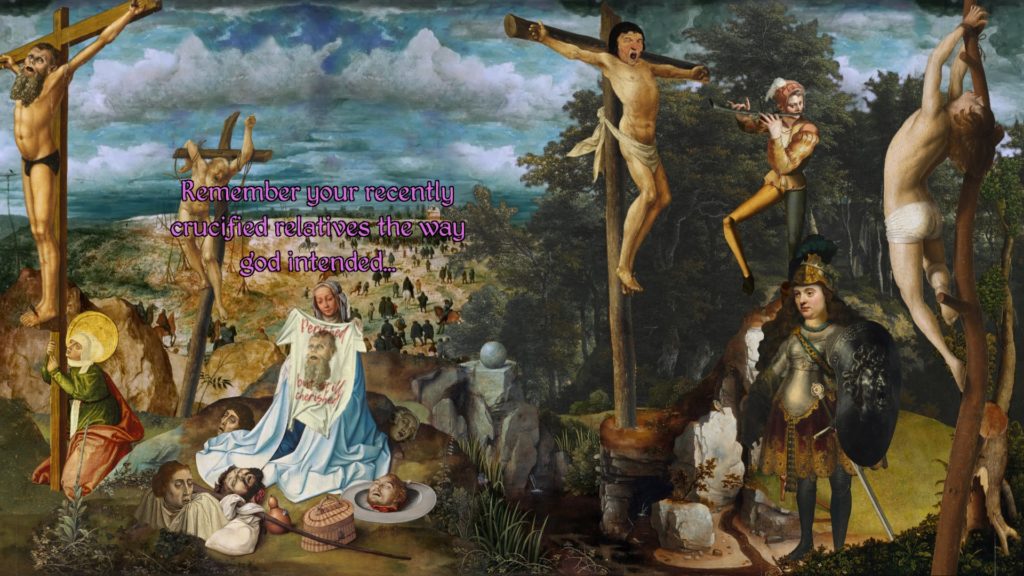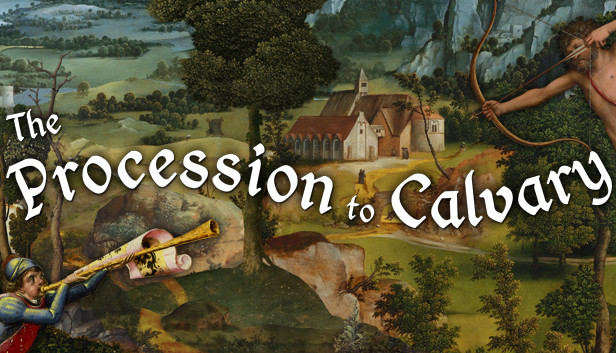Huzzah! A short but sweet homage to point and click games of yore.
- Developer: Joe Richardson
- Publisher: (SUPERHOT PRESENTS) Joe Richardson
- Release date: 9th April 2020
- Genre: Point and Click Adventure
- Platforms: Windows PC
- Reviewed on: ASUS TUF FX505DY (Win 10/Steam)
- Game Supplied by: Publisher
As with all good point and click adventures, all you need is a mouse. You can point at things. You can click on things. You can point and click on things.
I could leave it there and fans of the genre would totally understand the type of gameplay on offer, but frankly, that’s a bit of a cop-out. Especially in the midst of a Coronavirus lockdown that affords me ample time to waffle on about having loads of time to waffle on. But I digress.
The premise of the game is quite straightforward. The game opens with your character bounding around, impaling, decapitating, stabbing, murdering and eviscerating her foes. After years of plundering, murdering and pillaging, though, the Holy War is over. Thanks to Immortal John’s victory over Heavenly Peter, there is no need for more killing, and the peasants rejoice.
This, however, doesn’t sit well with our protagonist, who is keen to continue murdering. Despite some utterly convincing arguments in favour of murdering a few more people, you are informed in no uncertain terms you must not murder anybody else. If you want to murder more people, then take it up with Immortal John himself.



After meeting with the aforementioned Immortal John, you manage to persuade him to allow you to commit one more murder (but only one!) Hence begins your quest to murder Heavenly Peter, who escaped to the South after the Holy War. Onwards to murder! (I feel like I’ve said murder quite a lot… To be honest, it does come up quite often in the plot. Even if it is frowned upon.)
Crude, rude and often dark humour permeates everything in The Procession to Calvary. It’s worth playing just for the dialogue, and I found myself chuckling to myself frequently, and often breaking out into genuine laughter. There’s no doubt creator Joe Richardson is a huge Mony Python fan. The influence is so strong that, despite there being no vocal audio, I read the various characters voices in the inimitable style of John Cleese, Eric Idle et al.
The settings are all derived from renaissance era paintings that are used as the backdrops for the levels, while the characters you meet and interact with are all animated from similar artwork. Not only does it allow you the pretence of being a cultured aesthete, but it’s also gloriously silly. You will encounter everything from naked men wrestling upon a pier and a woman selling crucifixion memorabilia to a gatekeeper brandishing an enormous key.
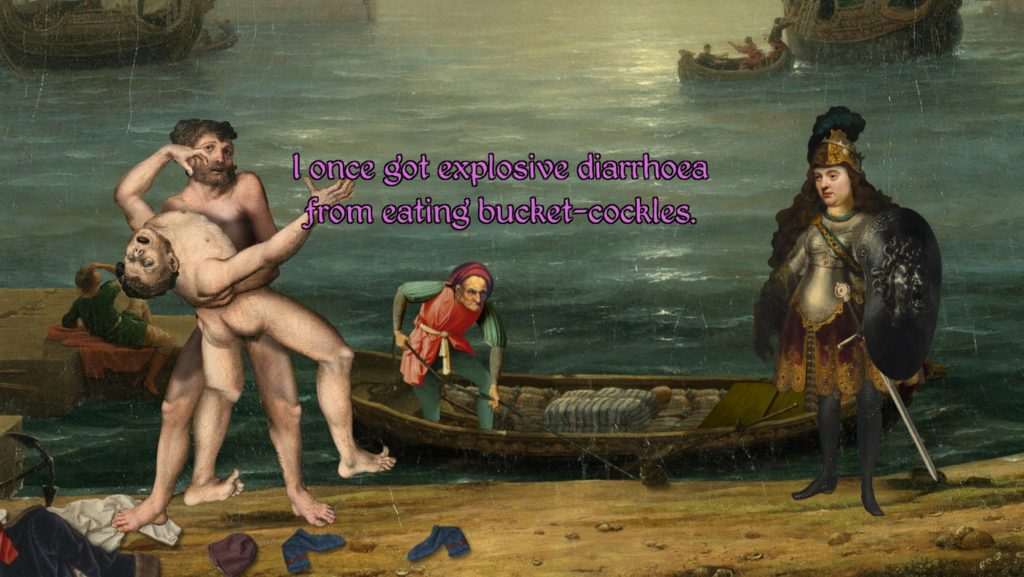
Gameplay, once you begin your short but epic quest, revolves around finding progressively more ridiculous, illogical and unlikely objects to solve multi-layered puzzles. If you are familiar with the Secret of Monkey Island games, you will have a good idea of what (not) to expect. As convoluted as some of these puzzles may be, they are never too tricky to decipher thanks to the clever layering of hints within the dialogue.
The dialogue itself allows you to choose from many retorts, and there are always options that result in humorous interactions.
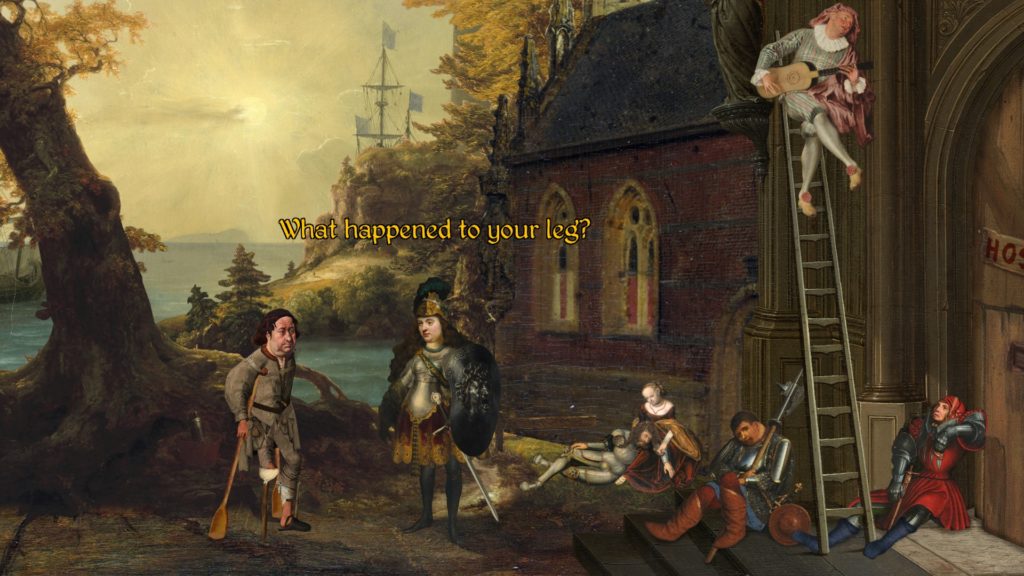
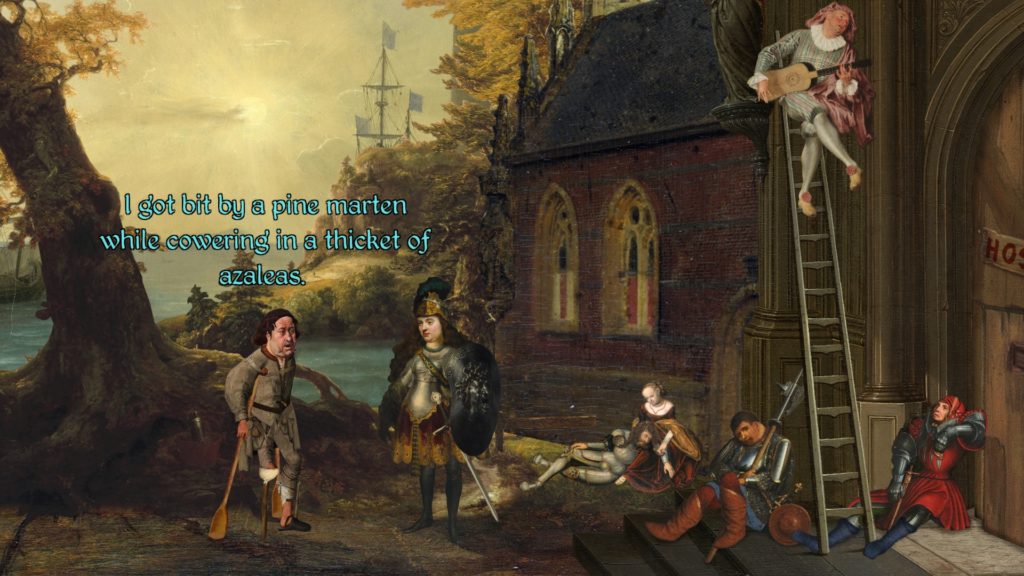
It’s not just the humour that pays homage to Monty Python. The way the images have been brought to life is very reminiscent of Terry Gilliam’s work. All of the background scenery and characters are made out of period artwork. (They are very good paintings, but do we credit the developer or the artists? Hmm. Let’s say the developer has chosen some excellent artworks in the creating of the game.)
The scenery is basically an animated background, but the interaction between characters and their surroundings is convincing, with characters and objects all appearing in proportion to the scenery. The Gilliam-Esque animation works very well, too. In any other game, the clunky movement would be distinctly unwelcome, but the comically stiff animation lends itself perfectly to the art style and humour.
(A significant advantage to this style of artwork is that it runs exceptionally well on modestly powered machines. I had no problem playing at 2160p/60 with my Ryzen 5 3550H/Radeon RX 560X pairing.)
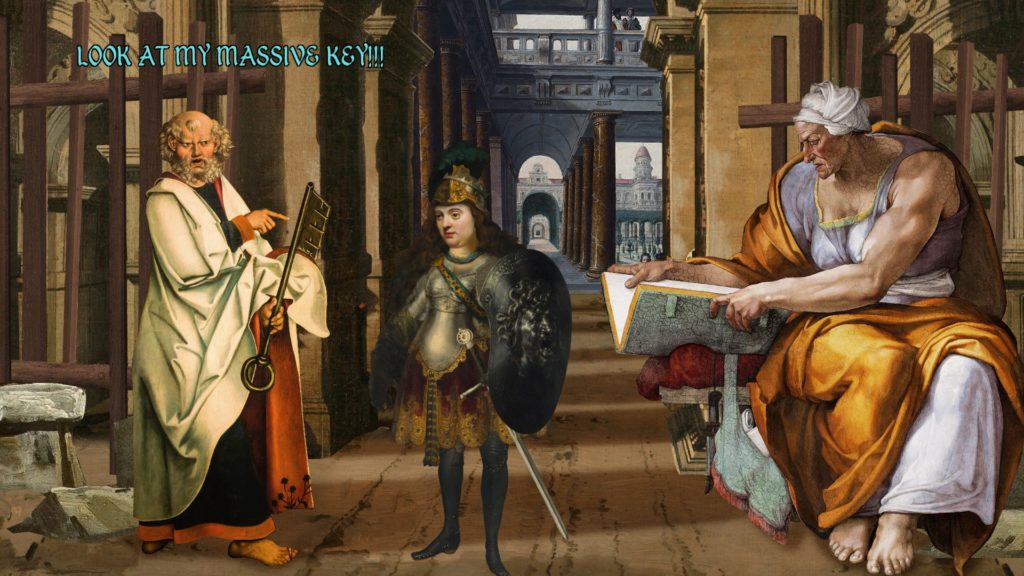
As mentioned, there is no audible dialogue (unless you count screams? There’s lots of screams.) Aside from a few audio cues and the occasional chink of swords, there’s not too much ambient noise either. It’s a shame the developer didn’t hire some half-decent voice talent to read the script aloud, as it could have made the game significantly more enjoyable.
Music makes up the majority of the audio and comes courtesy of royalty-free classical music that melds into the renaissance vibe of The Procession to Calvary remarkably well. There were a few pieces I recognised, and for the others, interacting with the musician/s will let you know the name of the composer and the piece. See, this game is educational and funny.
The Procession to Calvary, though very short, has a few endings to discover, and offers the opportunity for replayability. On my first playthrough, I relied on my trusty sword as my primary means of puzzle solving. Twenty minutes and a series of unnecessary murders later, and I had finished the game. I say finished. I won’t spoil it for you, but let’s say adopting this method doesn’t give you the best ending.
Summary
The Procession to Calvary is a unique puzzle-adventure game. Plentiful dark and irreverent humour is used to great effect, with a distinctive Monty Python flavour. Puzzle elements are delightfully illogical and comparable to the quirky, cryptic puzzling found in the Monkey Island games.
Despite its relatively short length, it’s a hugely enjoyable game that will appeal to both fans of the genre and those who enjoy the crude and dark humour. If you tick either of these boxes, you should absolutely pick up The Procession to Calvary.
